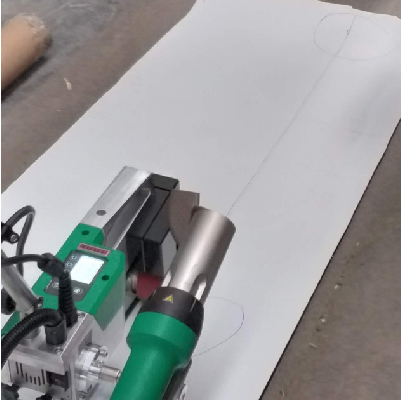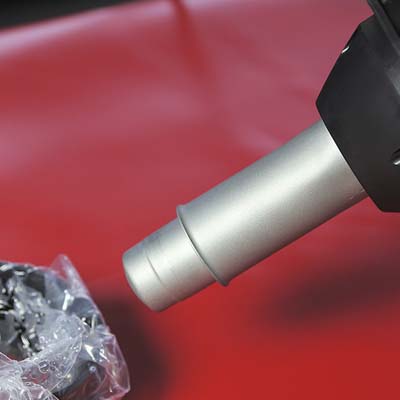PVC and TPO Sealing for Roofs
Plastic welding is as varied as the materials that constitute it. Most plastic welding processes involve machinery that applies heat (like a heat gun or an extruder) and, as such, the plastic weld. This weld usually consists of a long and resistant wire made with a particular plastic. PE, PET, PVC, PMMA… There are many types of this welding. Let us know some concrete examples in which each one of them is applied.
Hot air technology is the way in which we can join or seal pre-made membranes of PVC and TPO. Hot air equipment can be manual or semi-automatic. It can be used in workshops or roofs. Hot air equipment has an air heat blower that sucks in and expels air through a nozzle, which has a ceramic resistor that heats the air flow up to approximately 650 degrees. One of the greatest advantages of this sort of sealing is that no duct tape or glue is required, because the sealing is performed by overlapping the same material of tarps and membranes by means of heat.
The use of this hot air technology is very handy when installing pre-made PVC and TPO membranes to coat or waterproof commercial, industrial or residential roofs. The advantages of this waterproofing system are the durability and resistance against water and solar rays, and the heating benefits it provides. The floor semi-automatic equipment has the advantage that the sealing process is faster and depends less on the operator’s ability to achieve a tight installation.
¿Are you interested in sealing equipment of PVC and TPO for roofs?
Leave a message and we will contact you with the option that best meets your needs:









